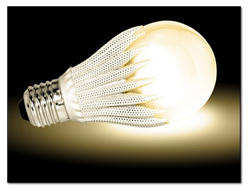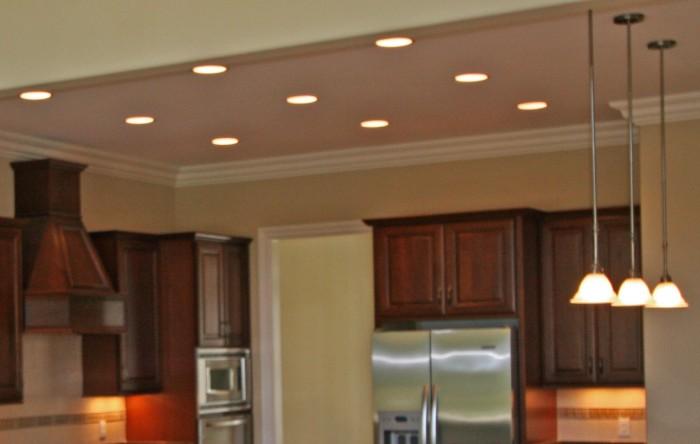LED Lighting for your NC Home: What are the Benefits?
Categories: Building a Home, Construction Process, Electrical, NC Construction | Posted: February 29, 2012
LED Lighting for your Brunswick County Home

How do they work?
The light-emitting diode (LED) bulb uses a semiconductor as its light source, and is currently one of the most energy-efficient and quickly developing types of bulbs for lighting your home. LEDs are recently being purchased to replace incandescent and other types of bulbs. LEDs are relatively more expensive than other types of bulbs, but are in the long-run end up being more cost-effective because they use only a fraction of the electricity of traditional lighting methods and can last far longer.
Cost: Saving Money and Energy
Many researchers and manufacturers are currently working hard to develop new and better LEDs for consumer use, and consumer prices are falling as the market grows. LEDs for the home are available in many different varieties, ranging from recessed fixtures, track lights, and traditionally shaped bulbs that can be used to replace incandescent bulbs in lamps and fixtures.
A large percentage of the energy that goes into a standard 40 Watt bulb is wasted as heat which is not good for conserving electricity and saving money. LED light bulbs generate relatively little heat as they glow, instead transferring more of their energy directly into light.
The U.S. Department of Energy estimates that rapid adoption of LED lighting over the next 20 years in the United States could save about $265 billion in energy costs and replace the construction of 40 new power plants.
 Ceiling Cans
Ceiling Cans
Ceiling cans (or recessed lighting) have become one of the most common styles of lighting for homes in the U.S. They are typically installed in groups simply for symmetry. Ceiling cans are an ideal place for LED light bulbs.
Other options for LED Lighting: Reading Lamps, Art Lighting, Night Lights, Outdoor Lighting, Children’s rooms: the Color Changing Party Light Bulb is particularly popular with children. It is a fun light that changes from red to blue to green at a gentle pace.
More about LED lighting
An LED light bulb can last you up to 50,000 hours. That averages out to 6 hours of light per day for 22 years. Some LED light bulbs are so energy efficient that, depending on how often you use them, they can pay for themselves in just over a year.
The best way to conserve energy is to use less of it. Most LED light bulbs are directional — which means they generally put the light out off the top of the bulb and away from the base. Incandescent bulbs, on the other hand, throw their light all over the place including toward the base — wasting electricity and generating heat. LED light bulbs run relatively cool, so they’re safer to use than fragile, burning hot halogen and incandescent bulbs. LEDs turn on instantly — a welcome difference to CFLs. LEDs do not use mercury like CFLs — so disposal concerns aren’t the same.
For more information on LED lighting for your home or any construction questions,
Contact Jeff Satterwhite: (910) 620-8883 or Jeff@gocenterline.com
or go to www.gocenterline.com






